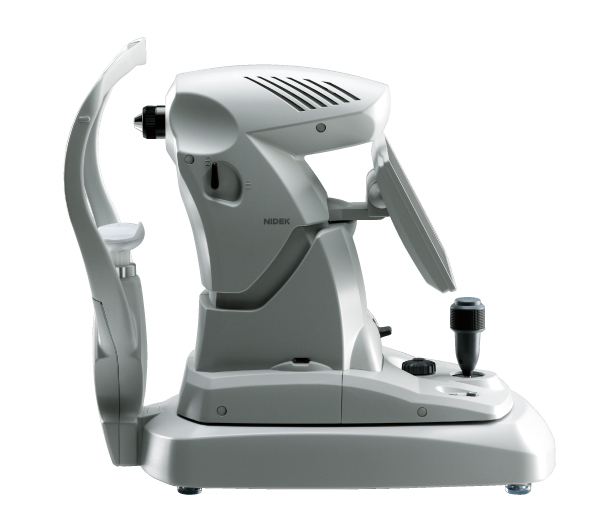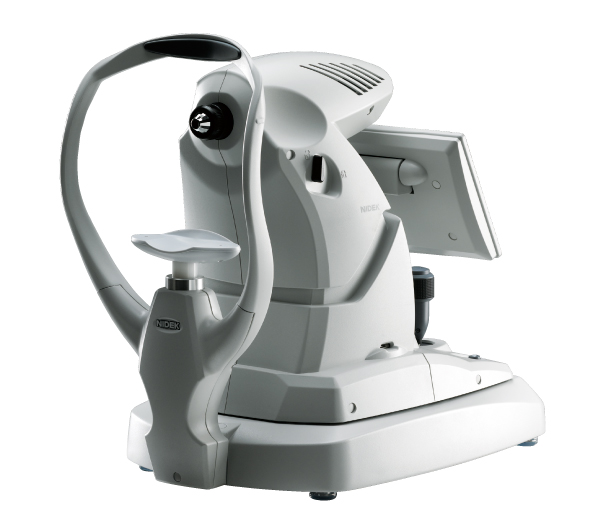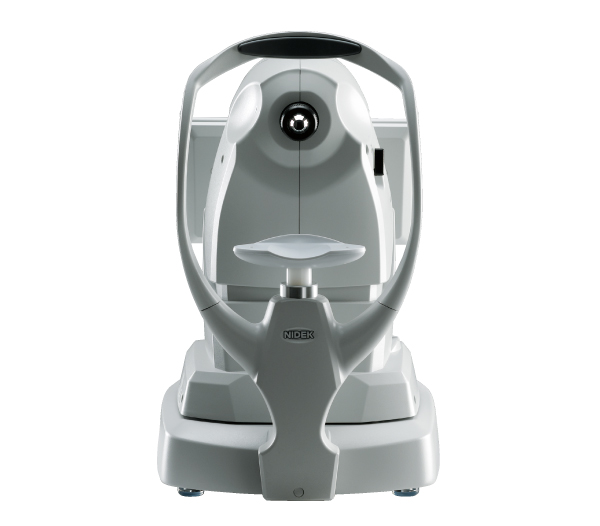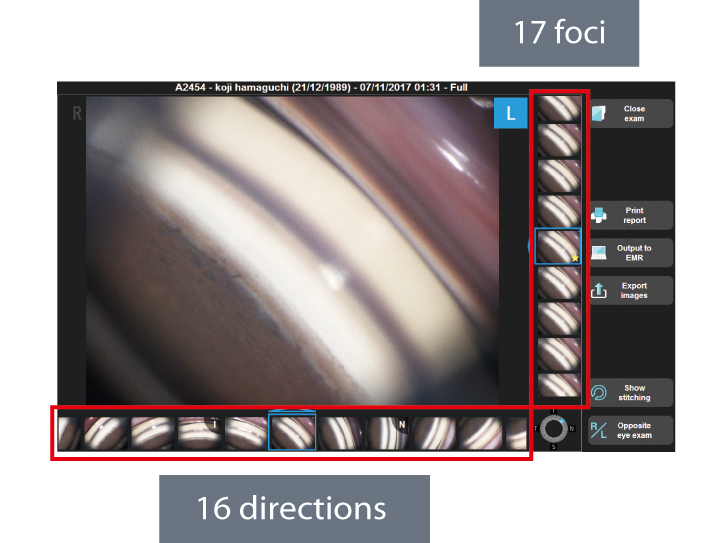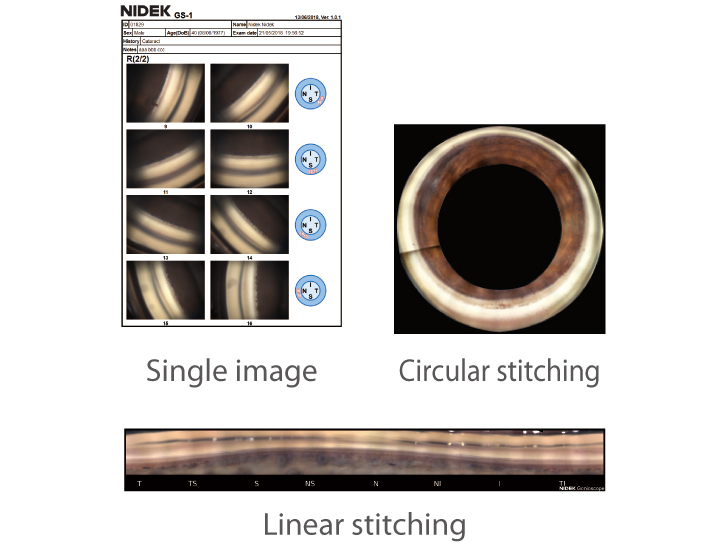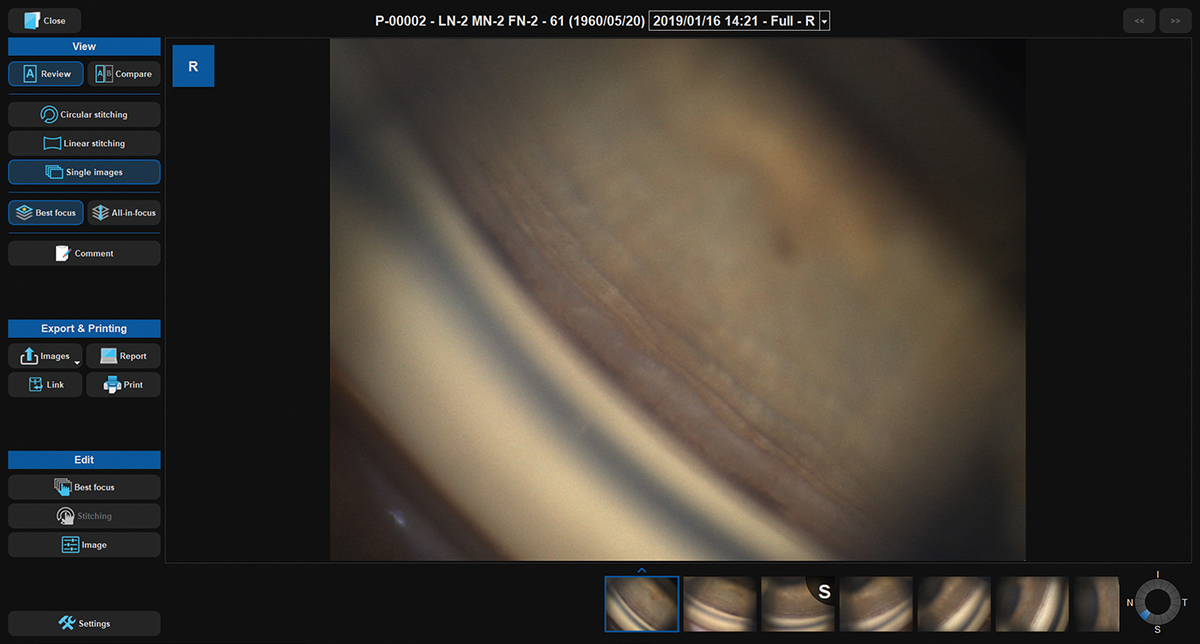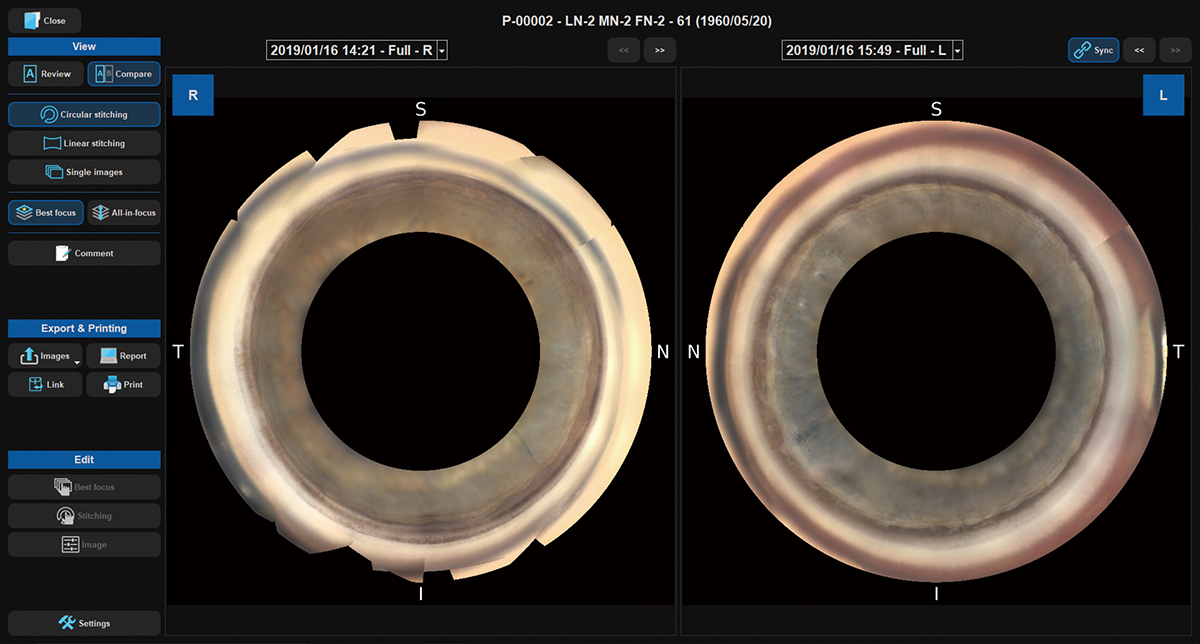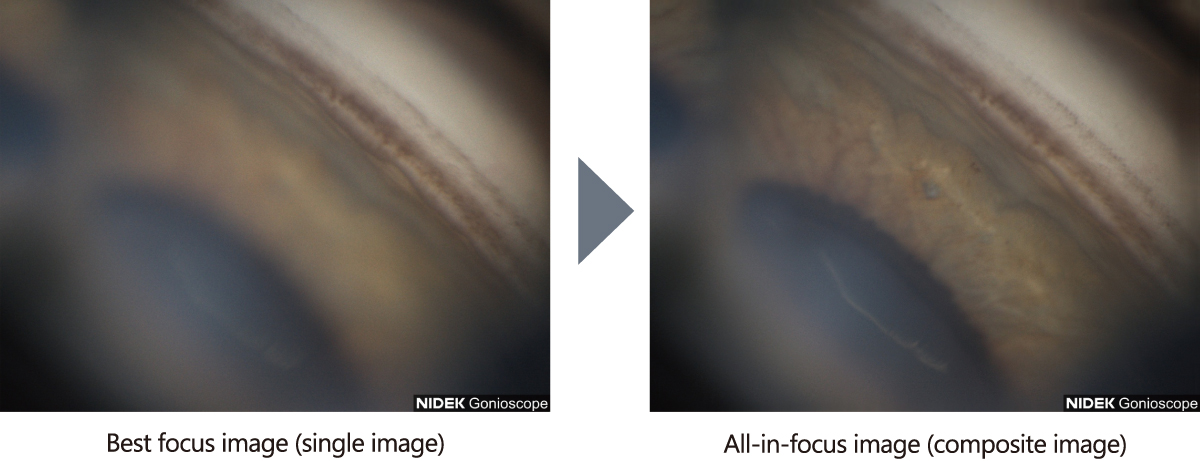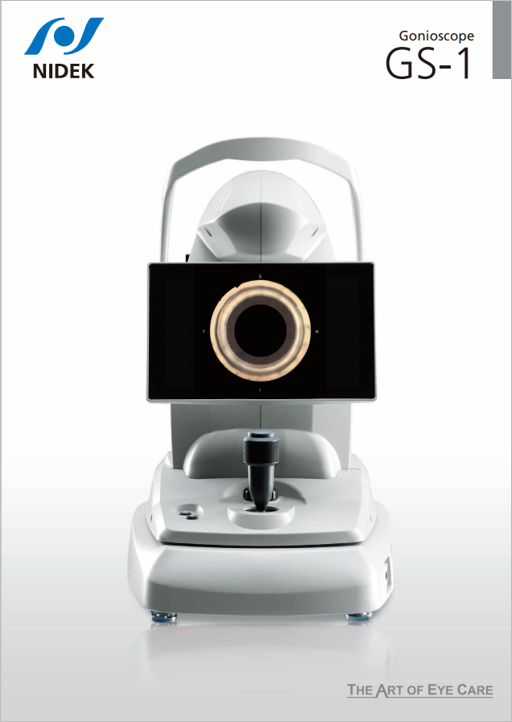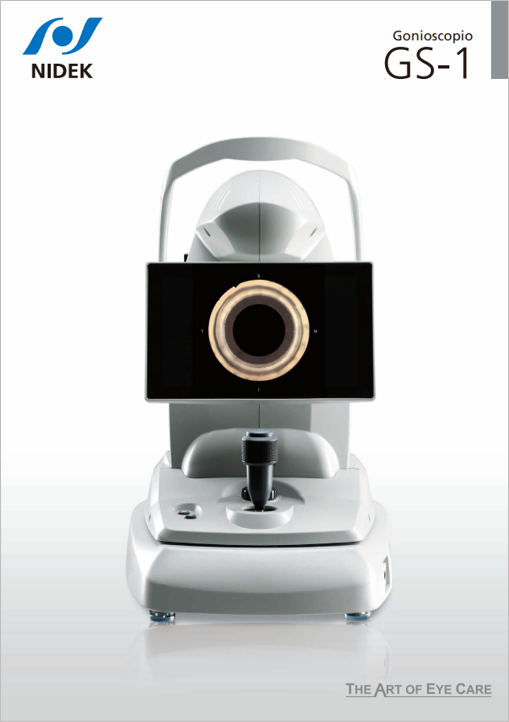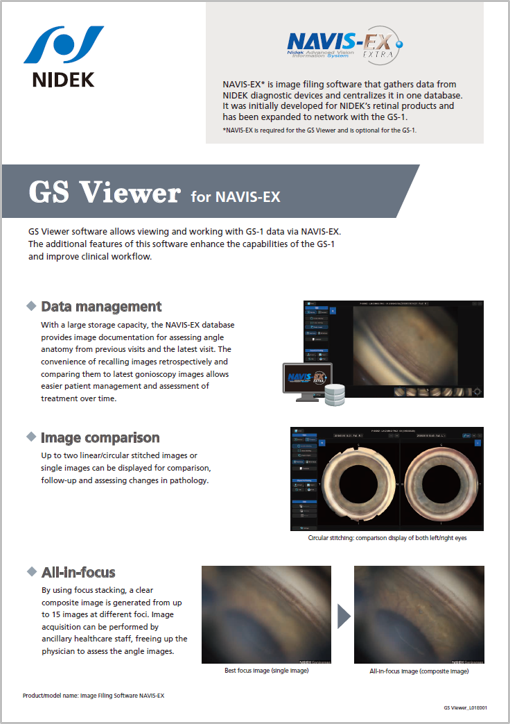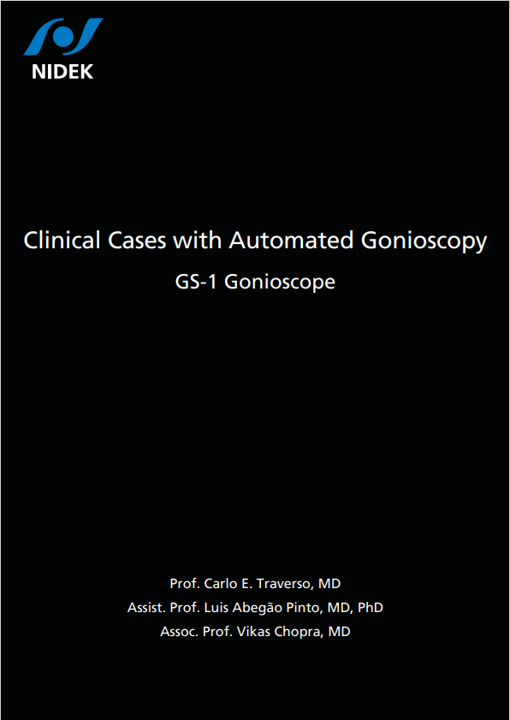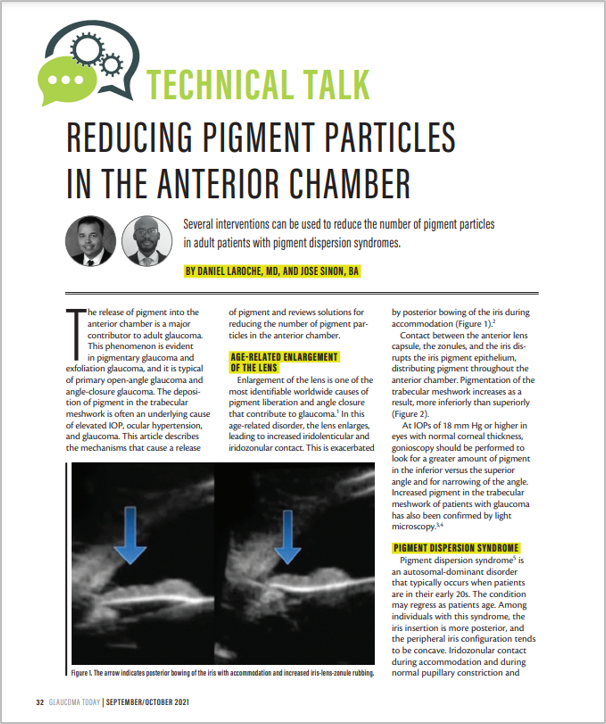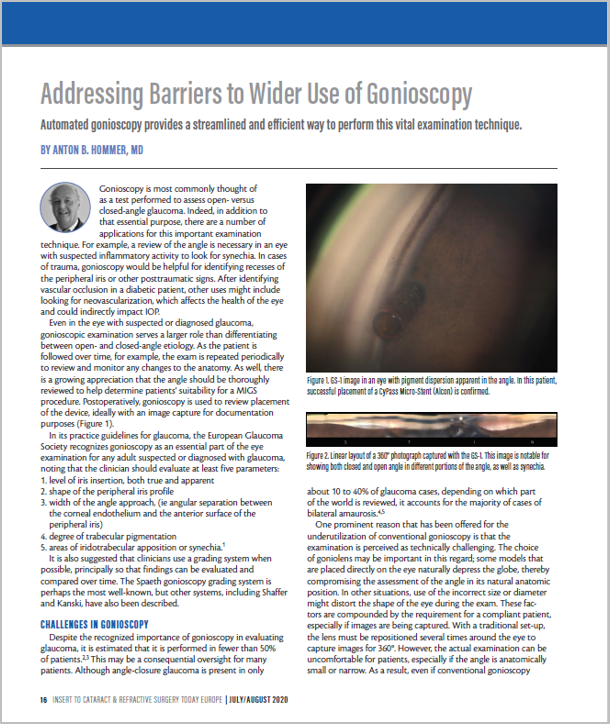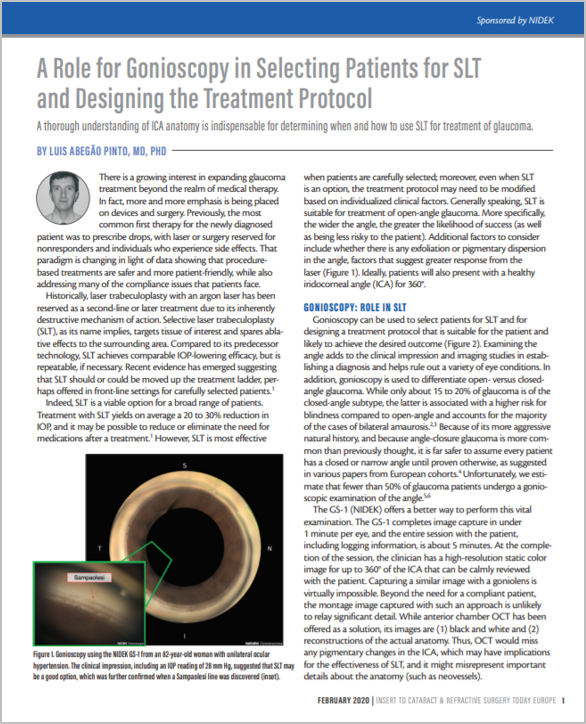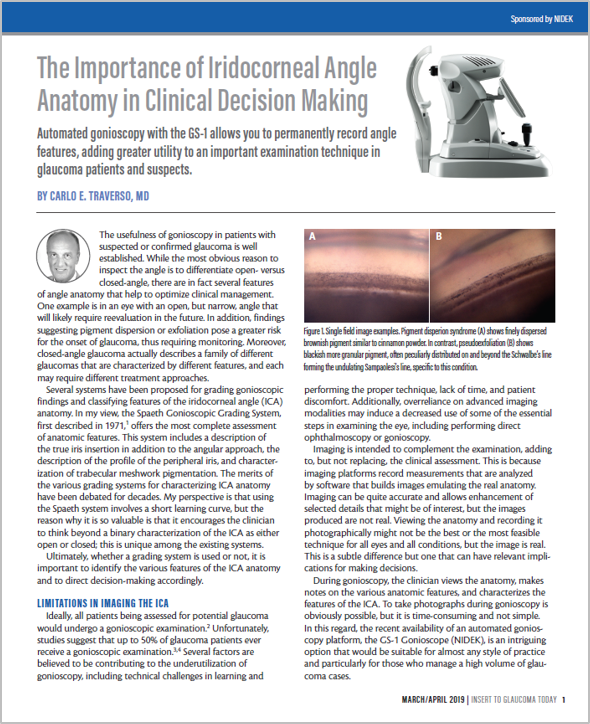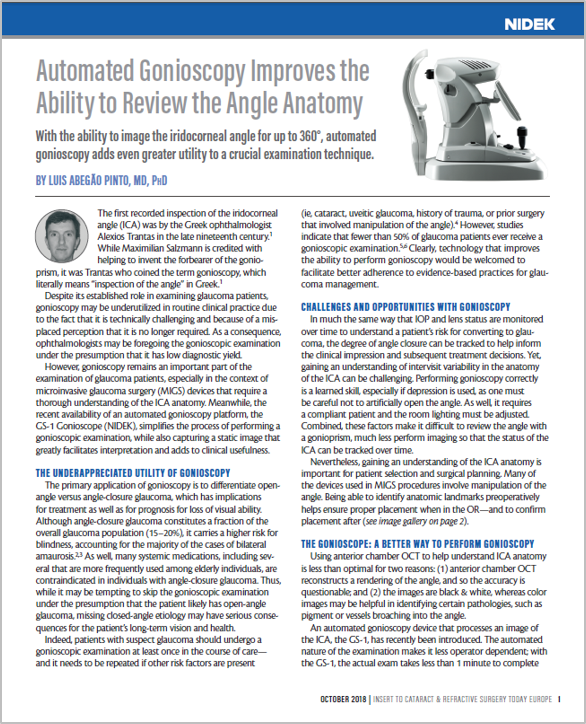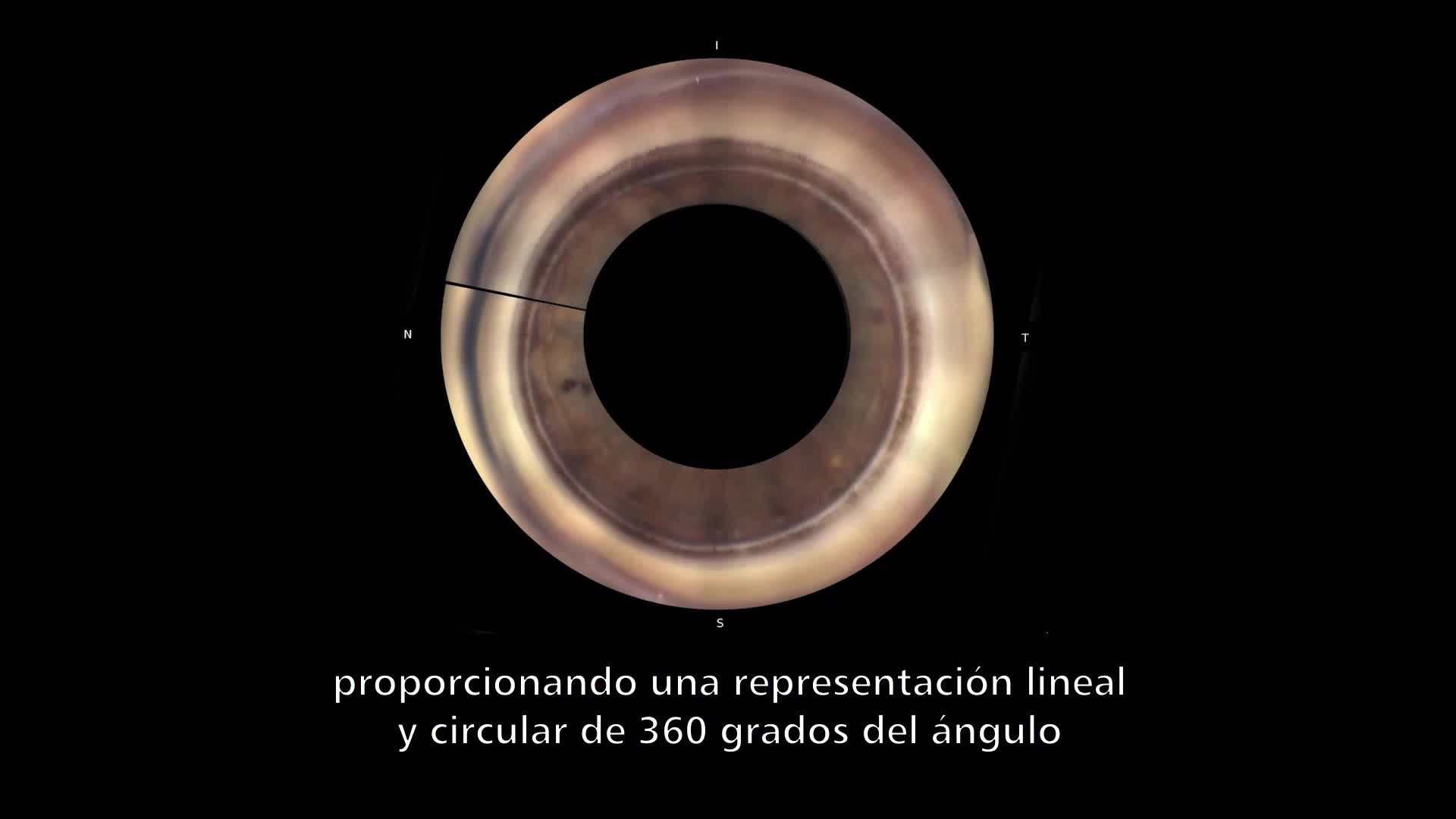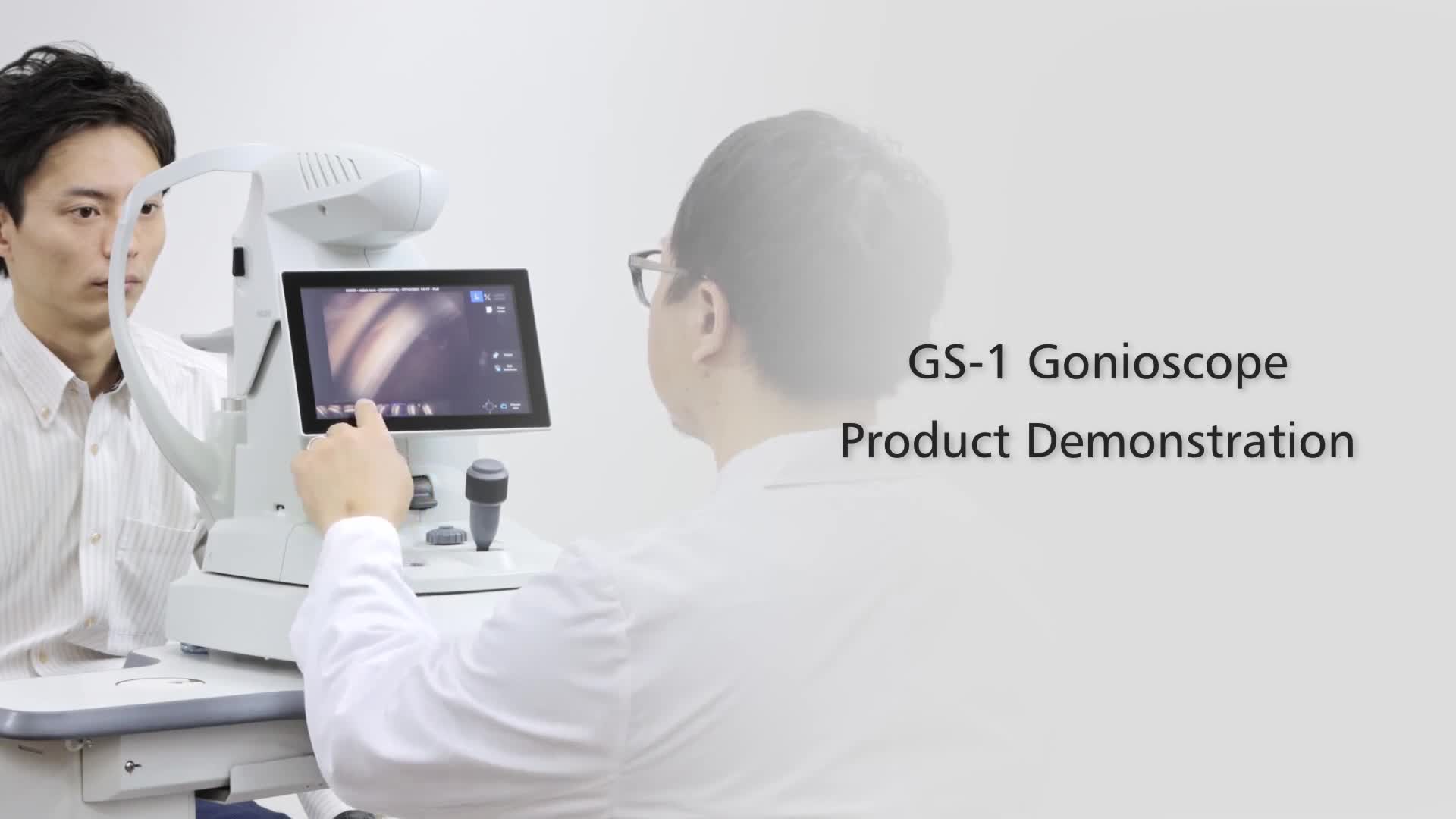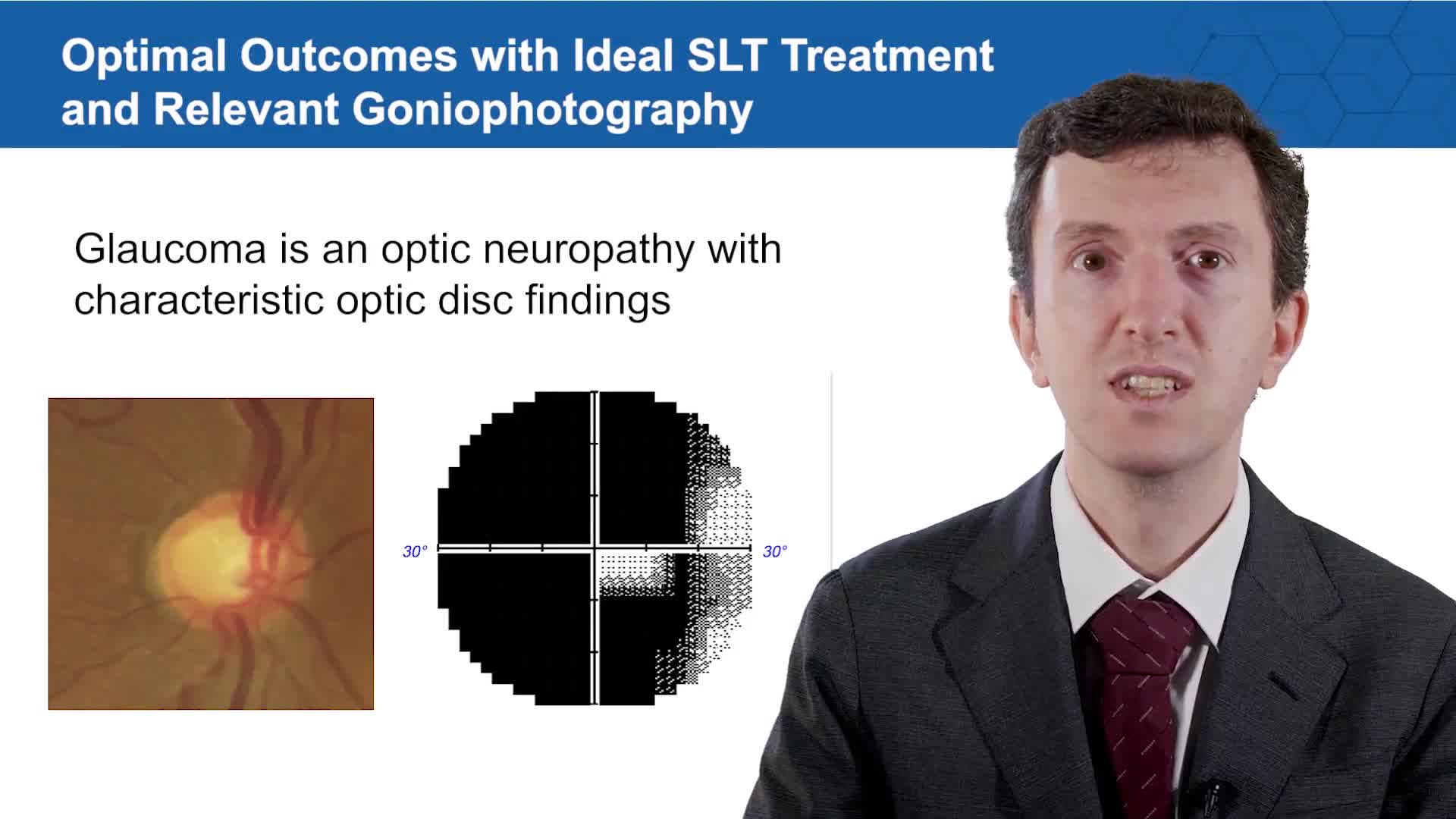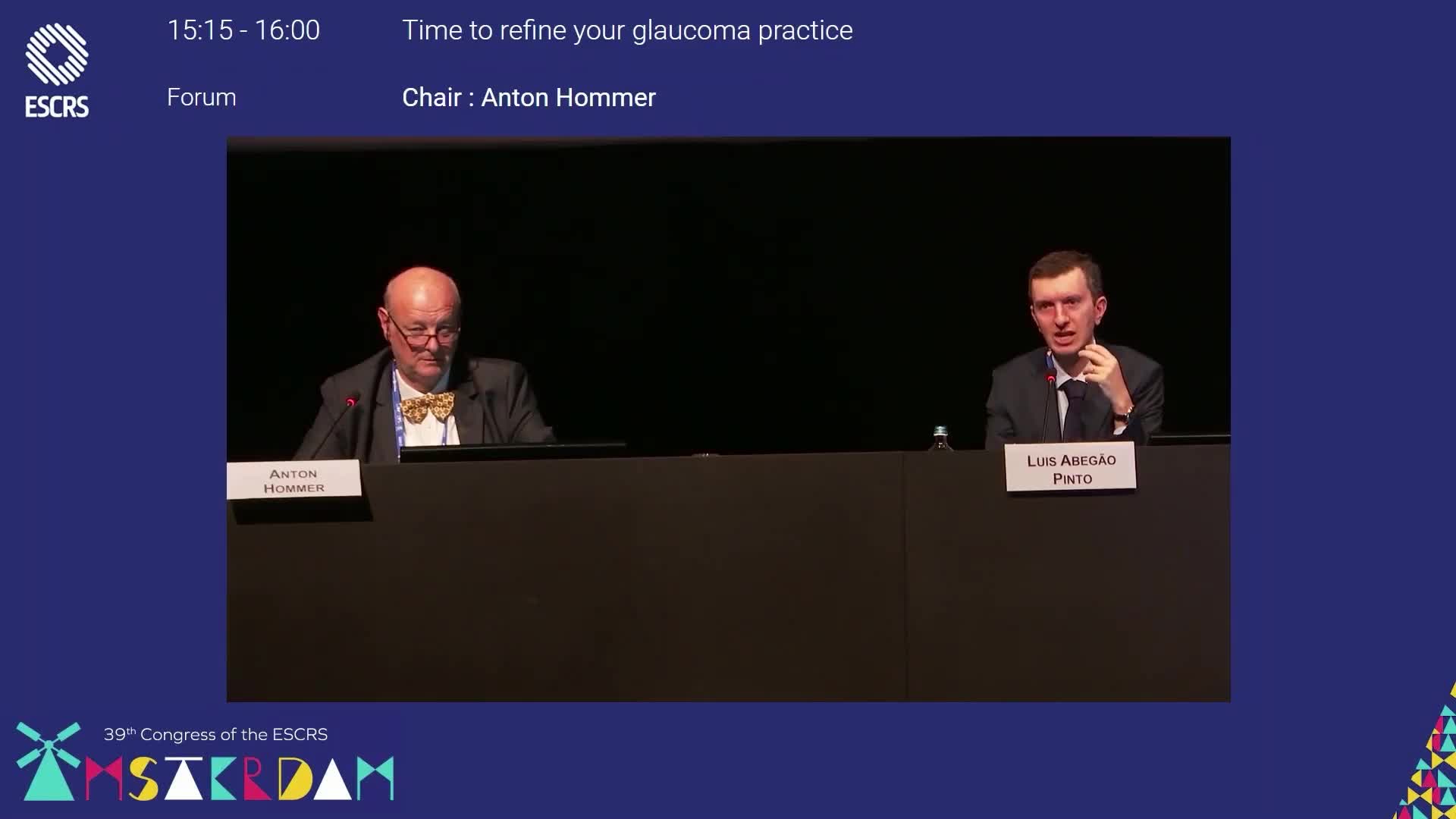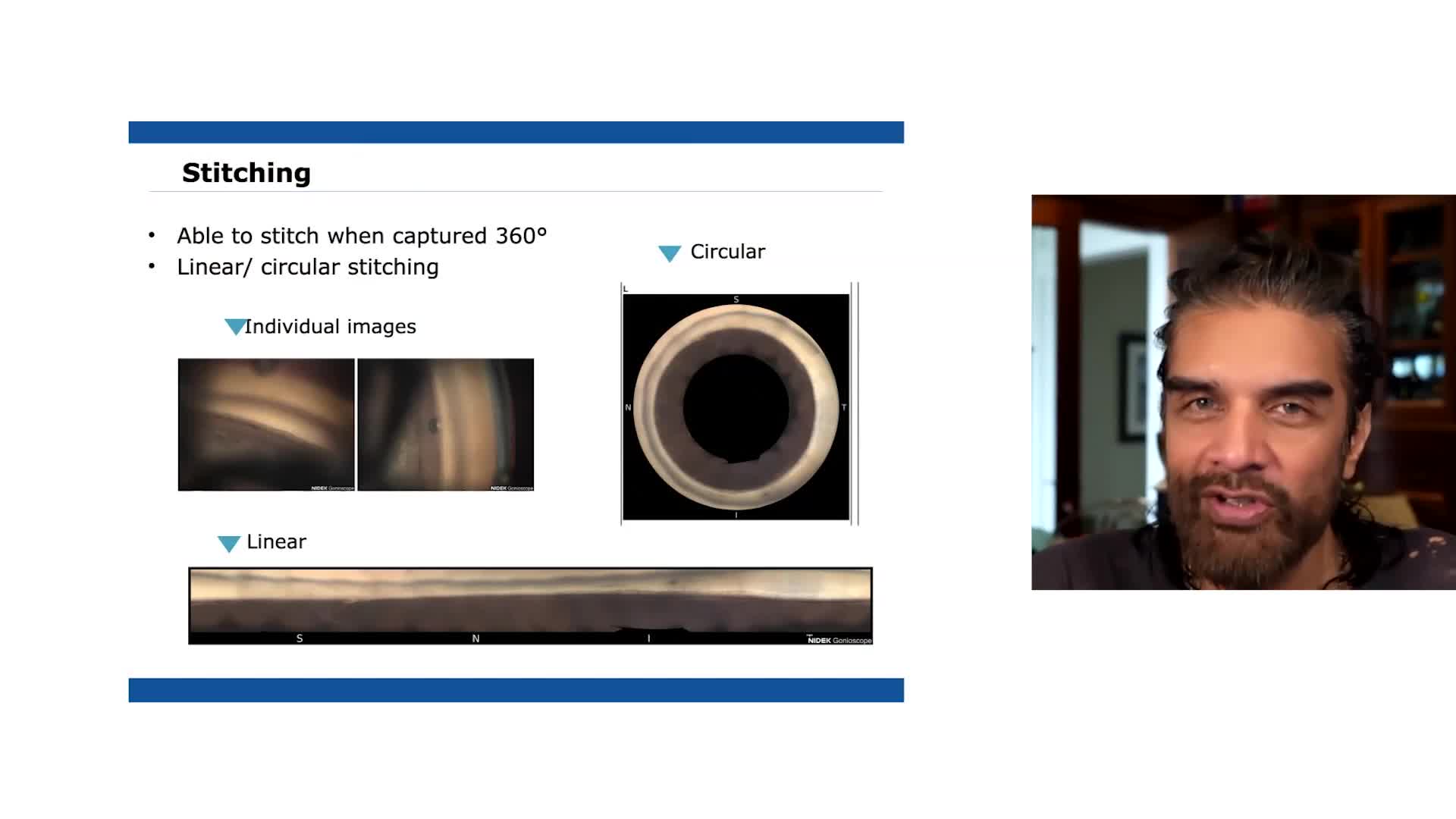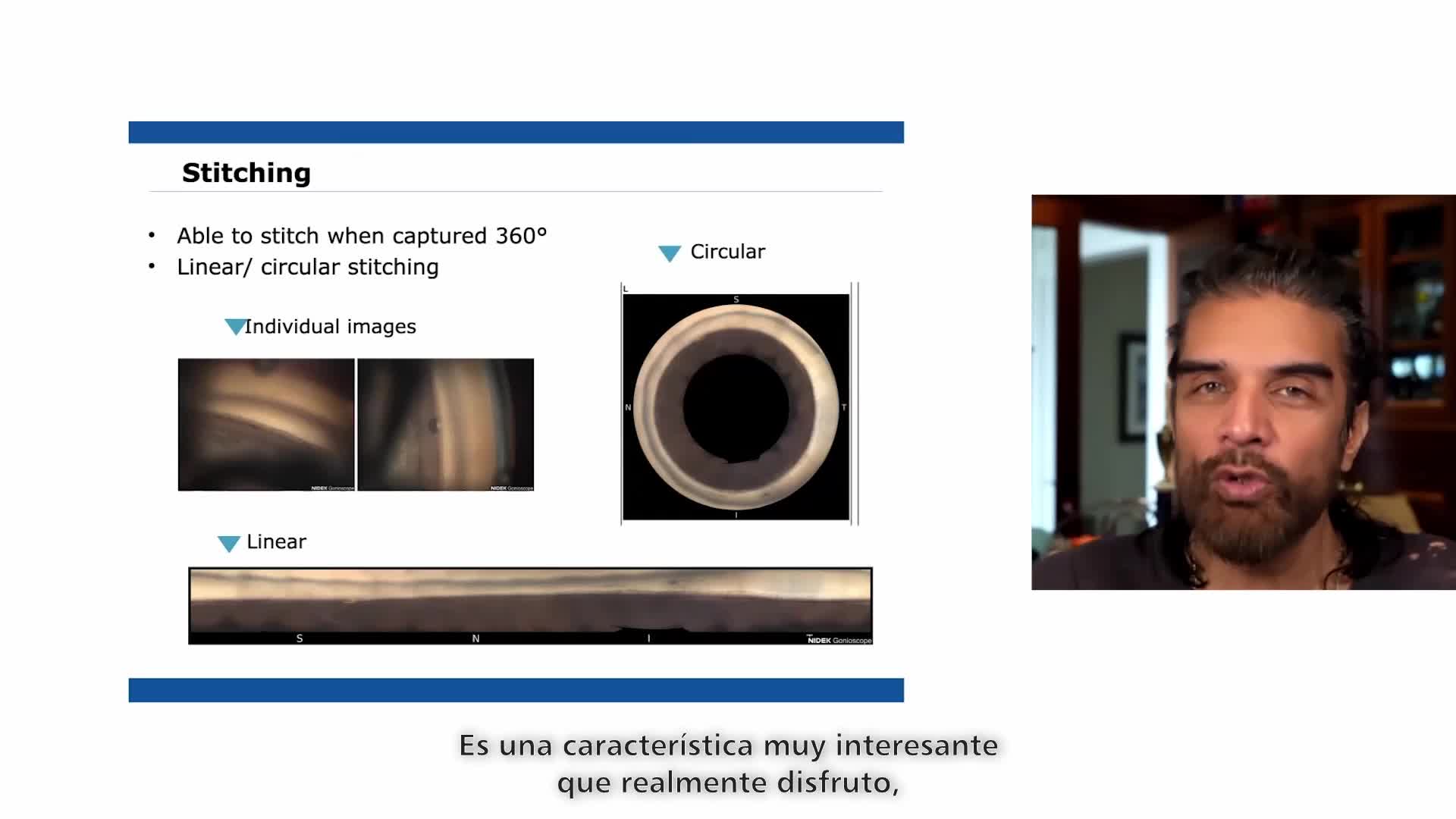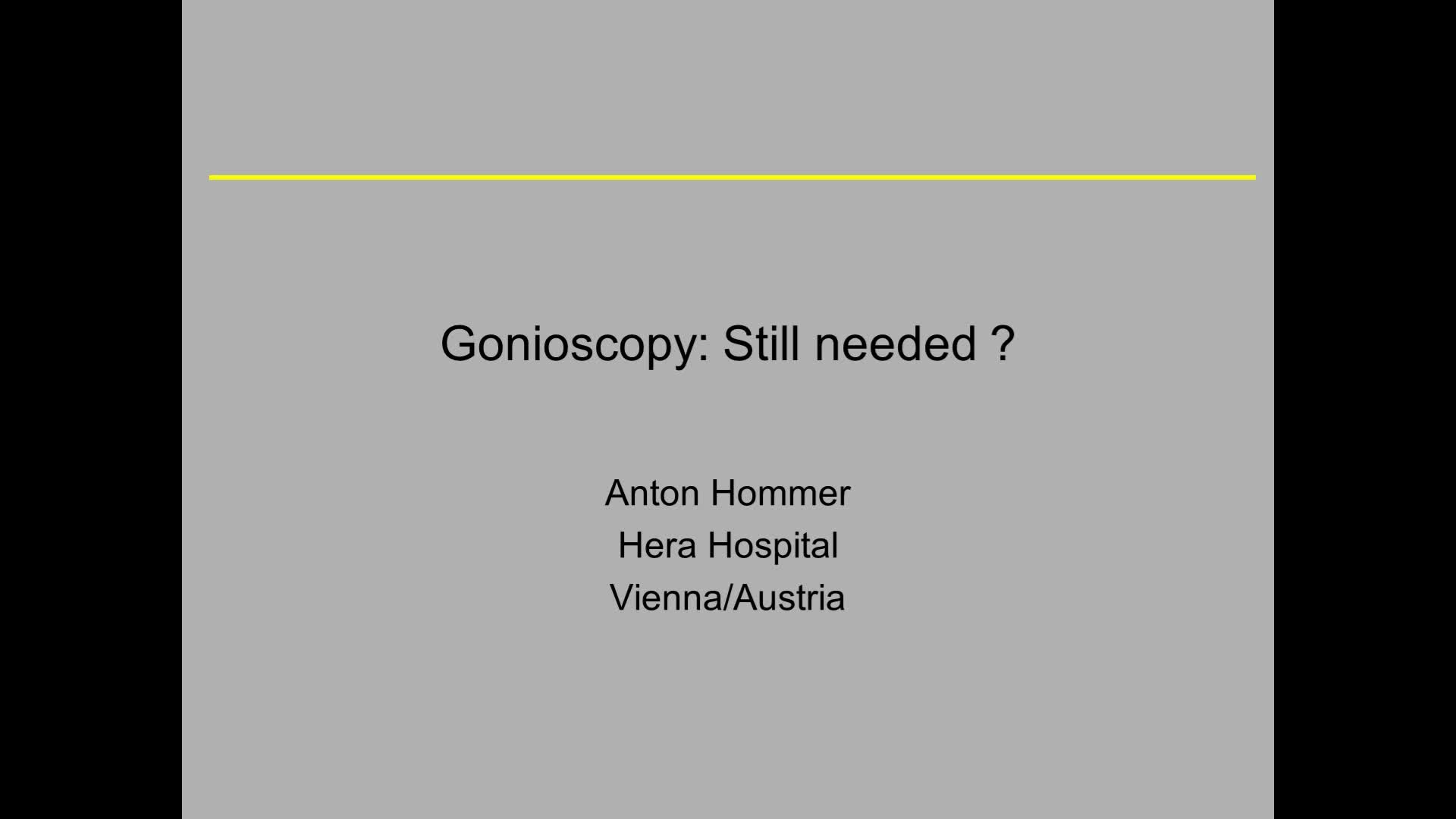Gonioscope
GS-1

Features
- Instant documentation of the iridocorneal angle in real-color photographs
- Freeing up time for the clinicians to assess and plan treatment
- Automated circumferential goniophotography
- Additional features with GS Viewer for NAVIS-EX
Detailed Information
Automated gonioscopy
Document. Assess. Plan.
A picture is worth a thousand words
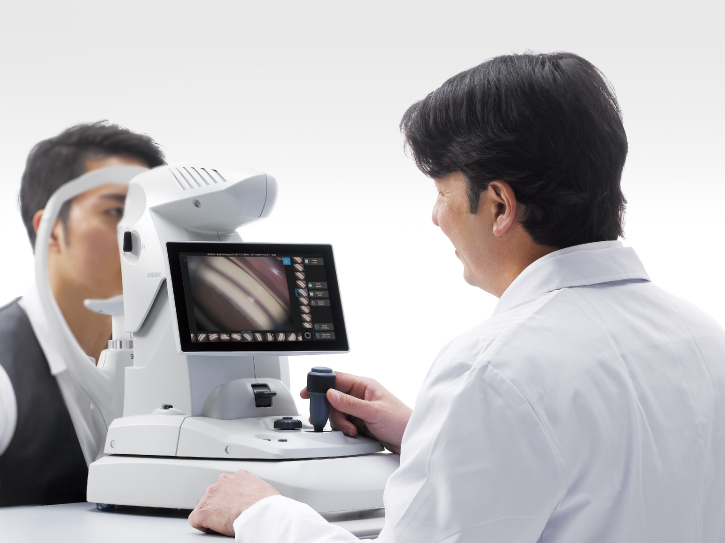 |
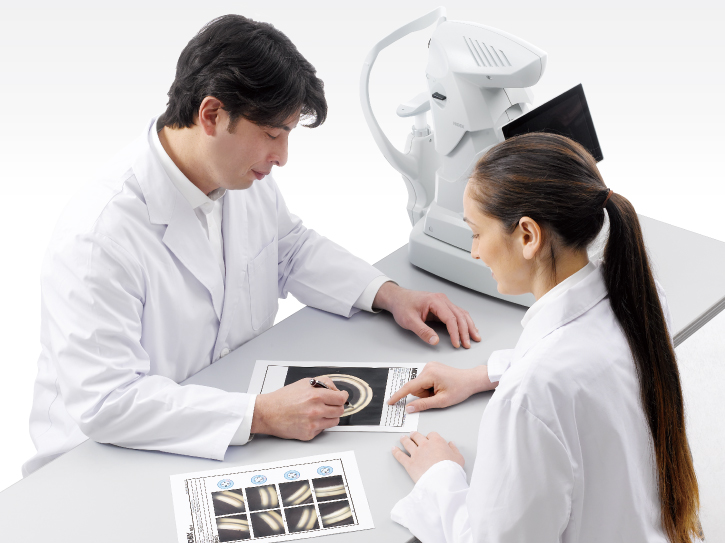 |
Instant documentation with the GS-1
The GS-1 instantly documents the iridocorneal angle in real-color photographs and stores them in the device. Hence, there is no need for detailed drawing or sketches in the patient chart to record angle pathology. Photographs from the GS-1 can be attached to the patient file or chart. Documentation with the GS-1 is far simpler and much more definitive than subjective sketches of pathology.
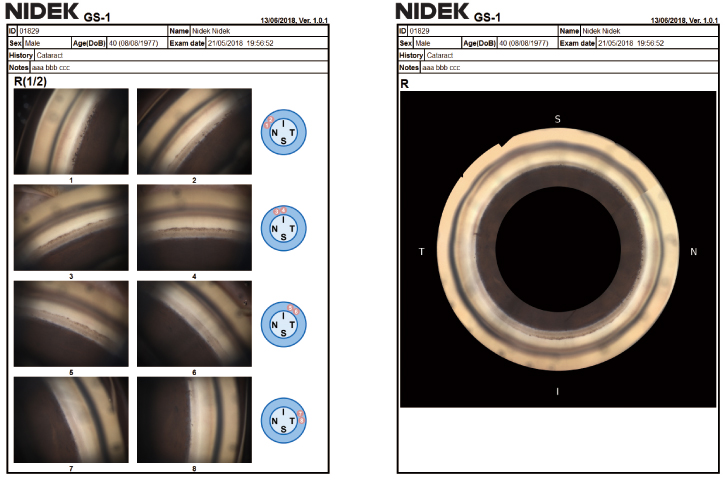
Easy documentation and assessment with the GS-1. |
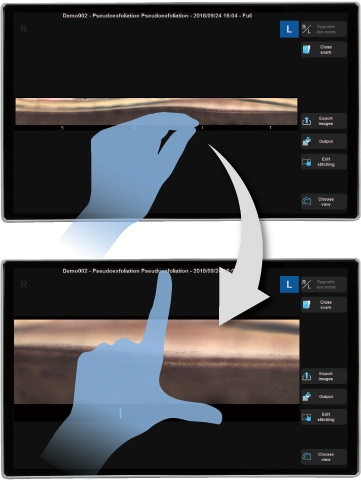
The photographs can be checked on the touch screen of the device and easily magnified. |
Documentation to be shared
Assessment of angle structure and pathology is easily facilitated by reviewing the digital photographs during clinical evaluation rather than performing manual gonioscopy. The digital photographs from the GS-1 can be shared from technicians to clinicians, with fellow clinicians, the referring physicians and patients, alongside complete documentation of GS-1 findings.
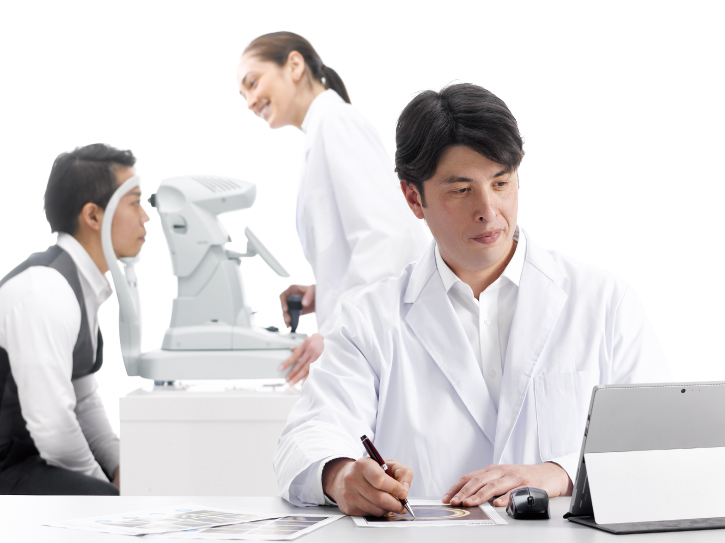
Focus on assessment and planning
|
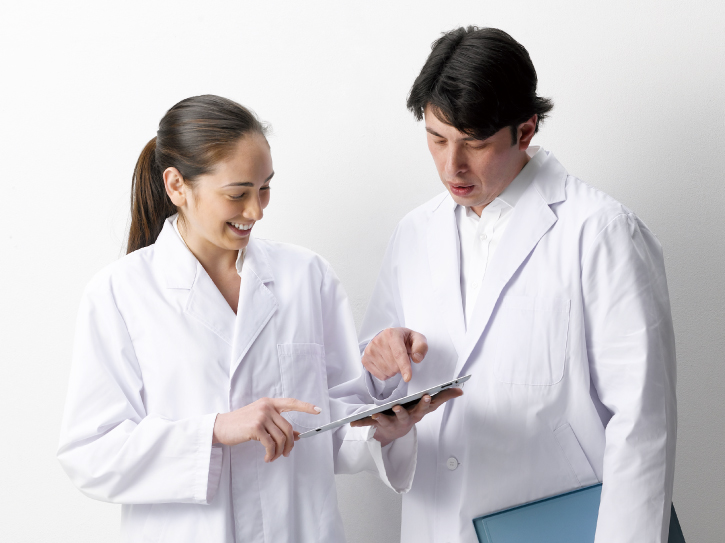
Consultation with fellow clinicians
|
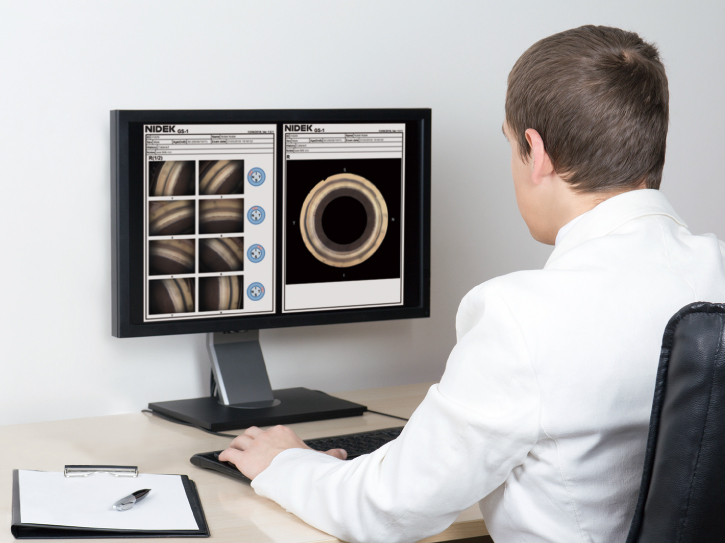
Effective information transfer to partner clinics |
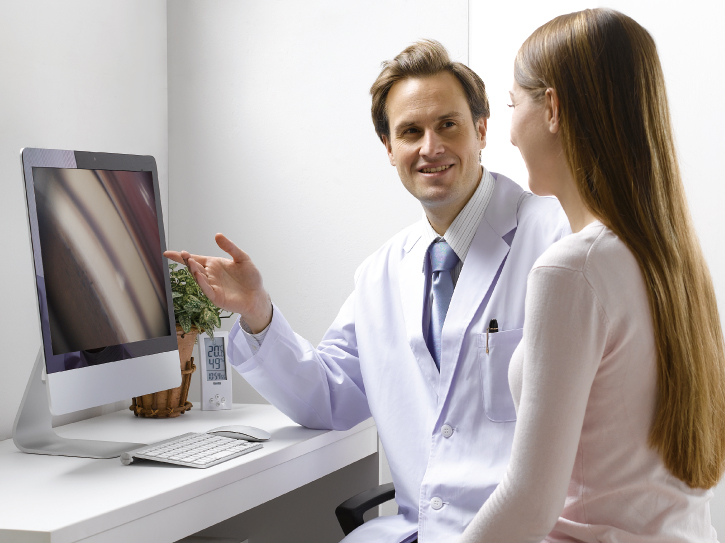
Easier patient consent |
Assess and plan with documentation
The GS-1 frees up time for the clinicians to assess and plan treatment. The digital goniophotographs add the convenience of re-assessing the entire angle at any time. High resolution color photographs enhance the quality of assessment and allow comprehensive follow-up.
Postoperative examples*
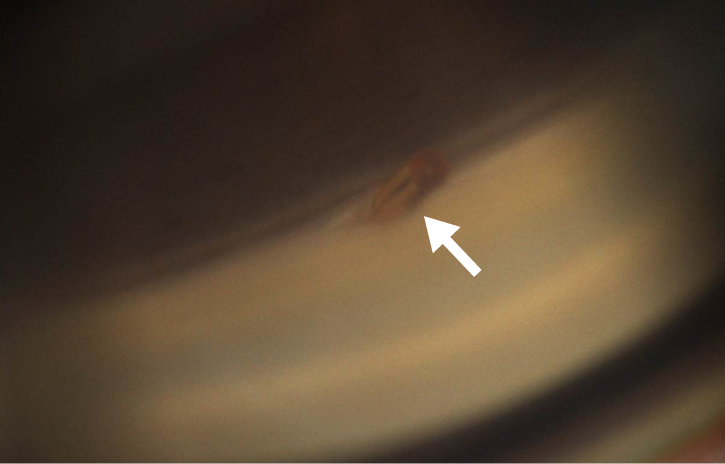
MIGS
|

Laser iridotomy
|
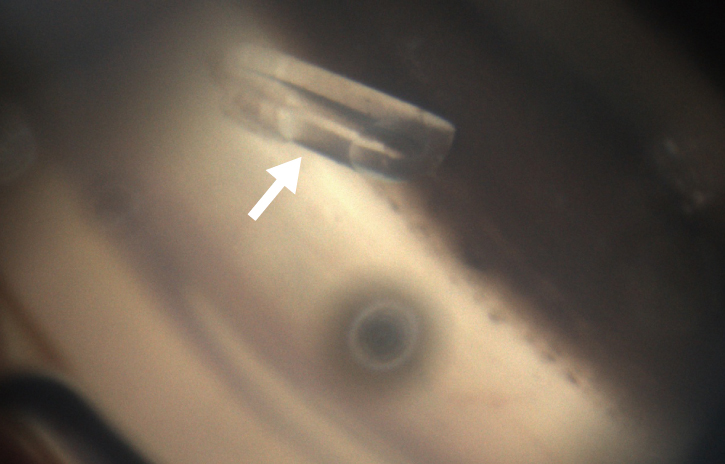
Tube |
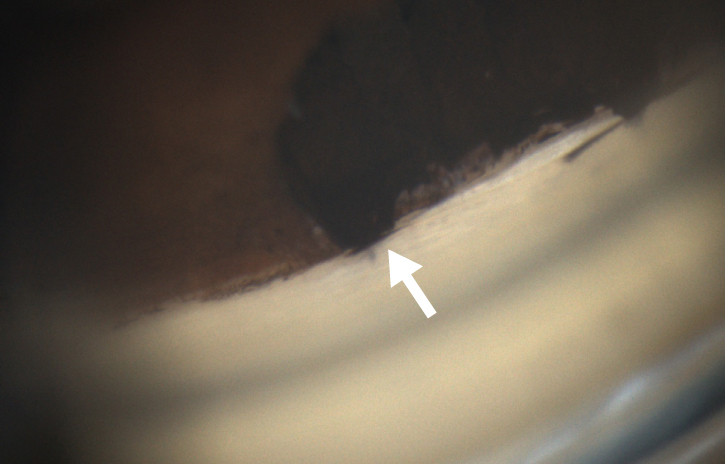
Trabeculectomy |
Progression of neovascularization (after 5 months)*
* Image courtesy of Prof C. E. TRAVERSO, MD, Clinica Oculistica, Di.N.O.G.M.I., University of Genova – Ospedale Policlinico S. Martino, Italy
GS-1 features
Automated circumferential goniophotography
Export images
Non-contact gel immersion measurement
| To ensure patient comfort, a coupling gel is used during image acquisition. The multimirror prism is not intended to touch the cornea. | 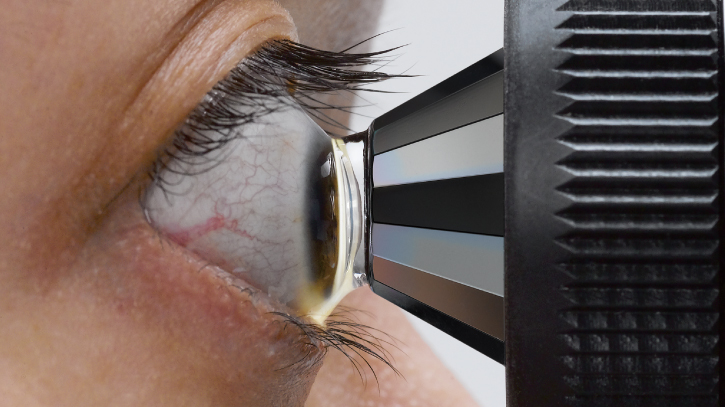 |
Additional features with GS Viewer for NAVIS-EX* (optional)
GS Viewer software allows viewing and working with GS-1 data via NAVIS-EX. The additional features of this software enhance the capabilities of the GS-1 and improve clinical workflow.
*NAVIS-EX is required for the GS Viewer and is optional for the GS-1. Product/model name: Image Filing Software NAVIS-EX
Data management
Image comparison
All-in-focus
Downloads
Videos
User Testimonials
Related Products
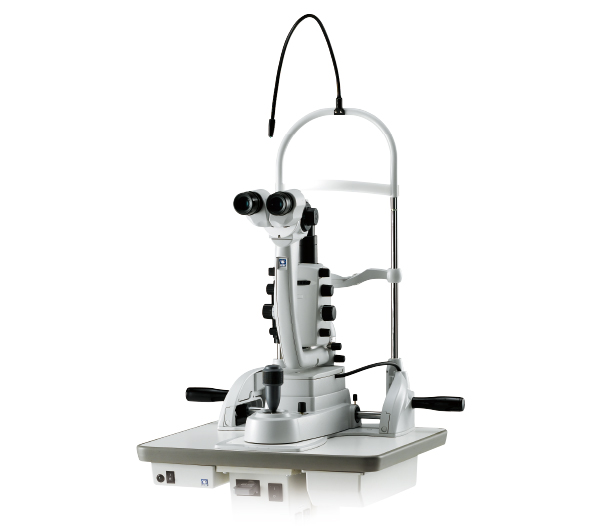
Slit Lamp
SL-2000
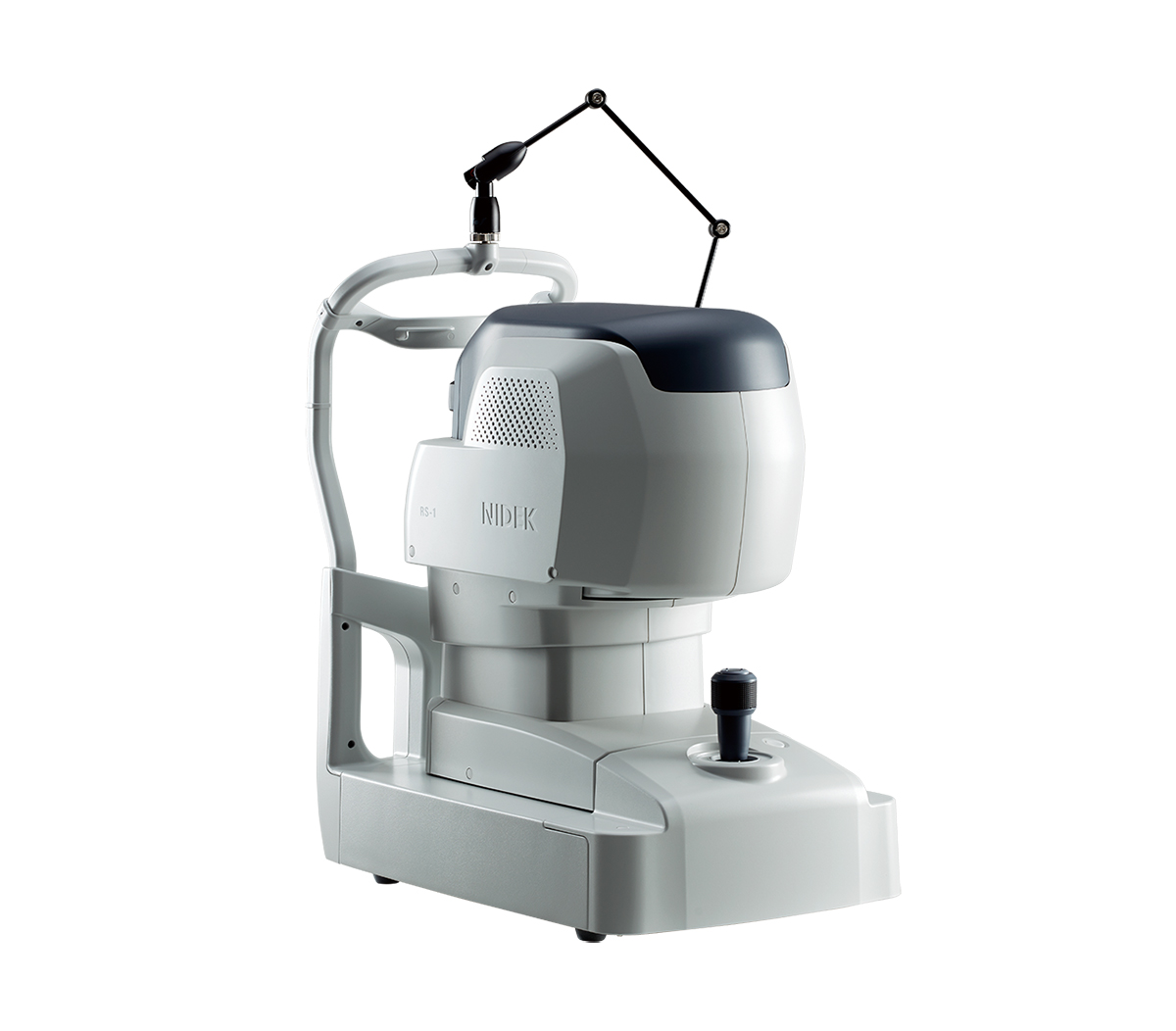
Optical Coherence Tomography
RS-1 Glauvas
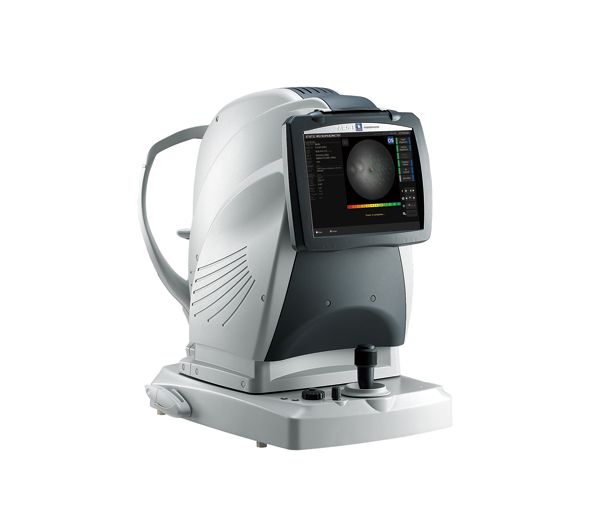
Microperimeter
MP-3
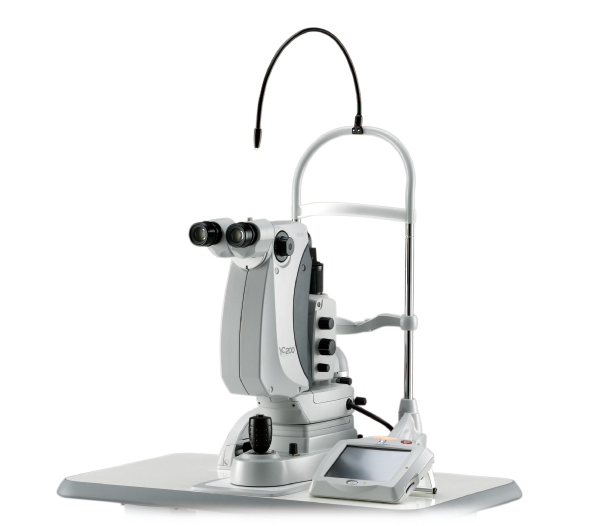
Ophthalmic YAG and SLT Laser System
YC-200 S plus
Ophthalmic YAG Laser System
YC-200
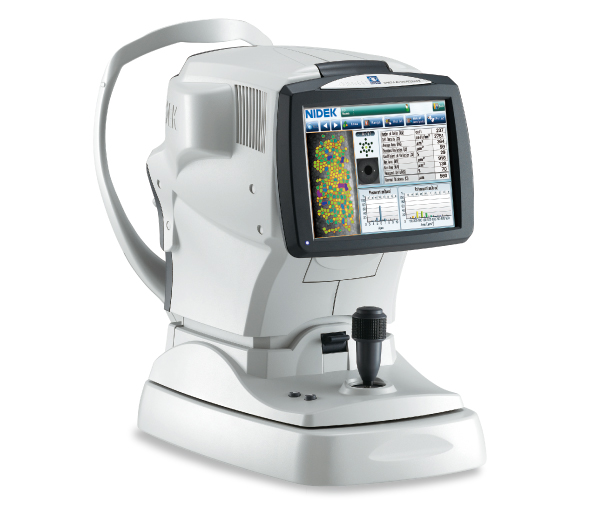
Specular Microscope
CEM-530
NOTE
The availability of products differs from country to country depending on the status of approval.
Specifications and design are subject to change without notice.
- Product/model name
- GONIOSCOPE GS-1



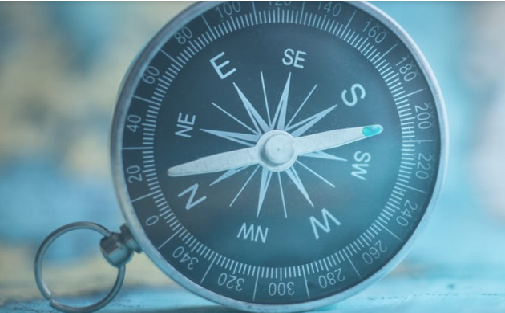
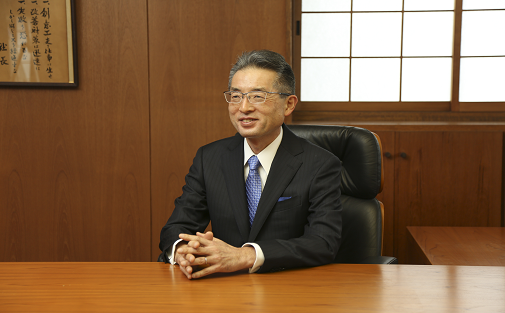
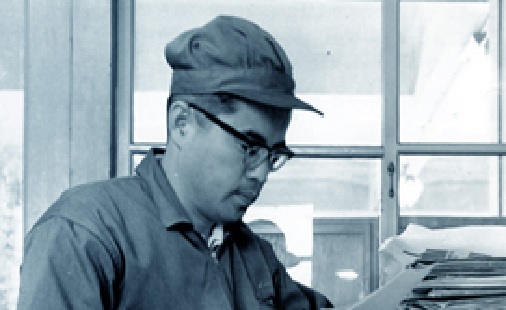

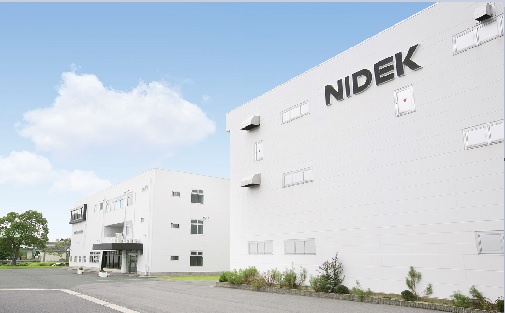
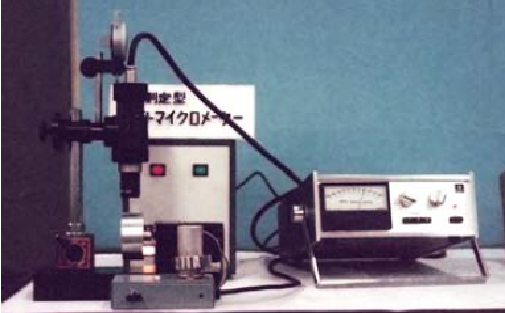
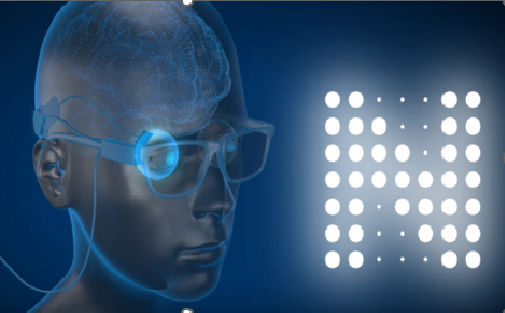
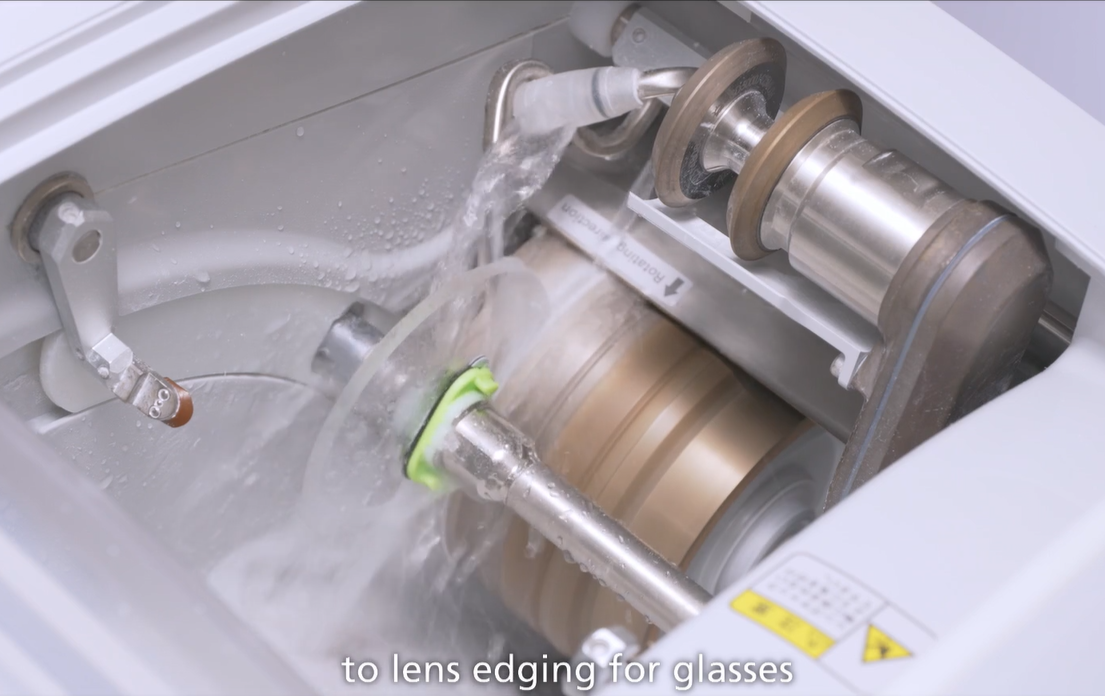
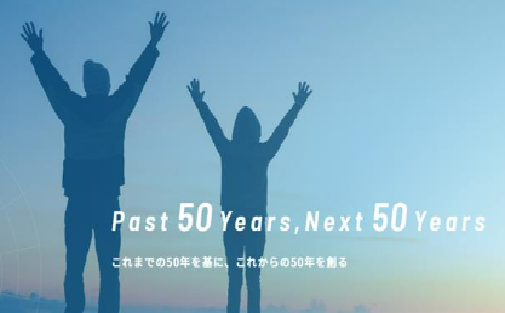

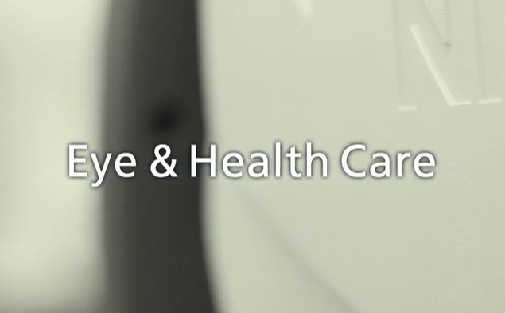
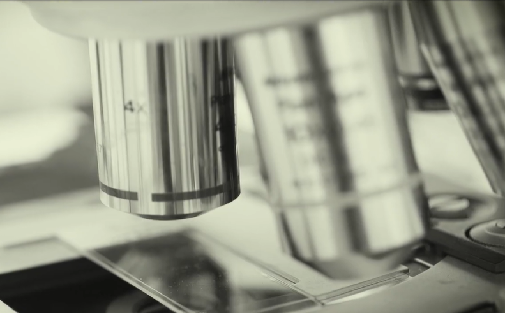

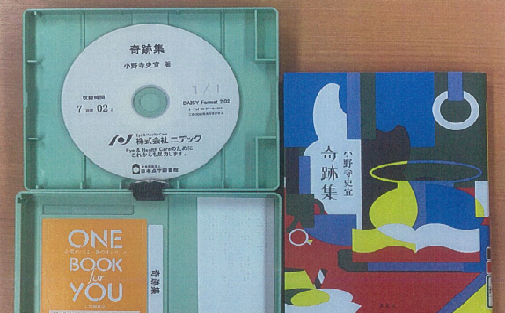

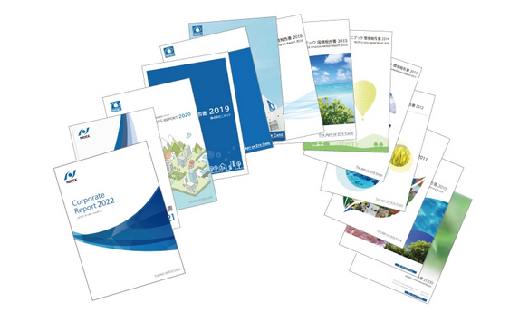
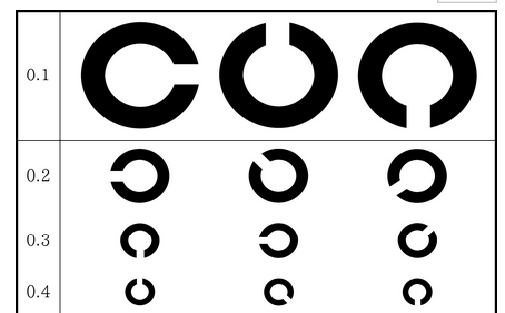




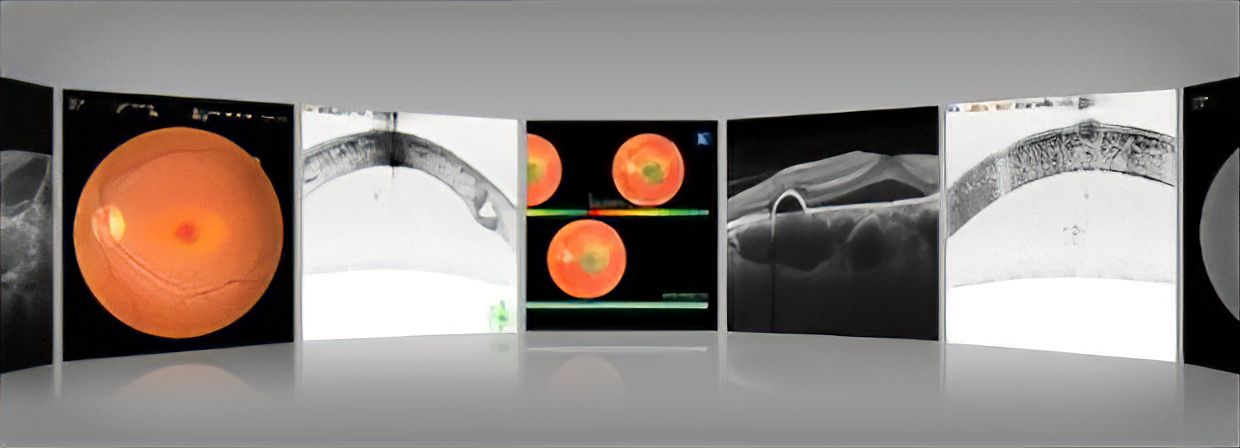
 TOP
TOP
